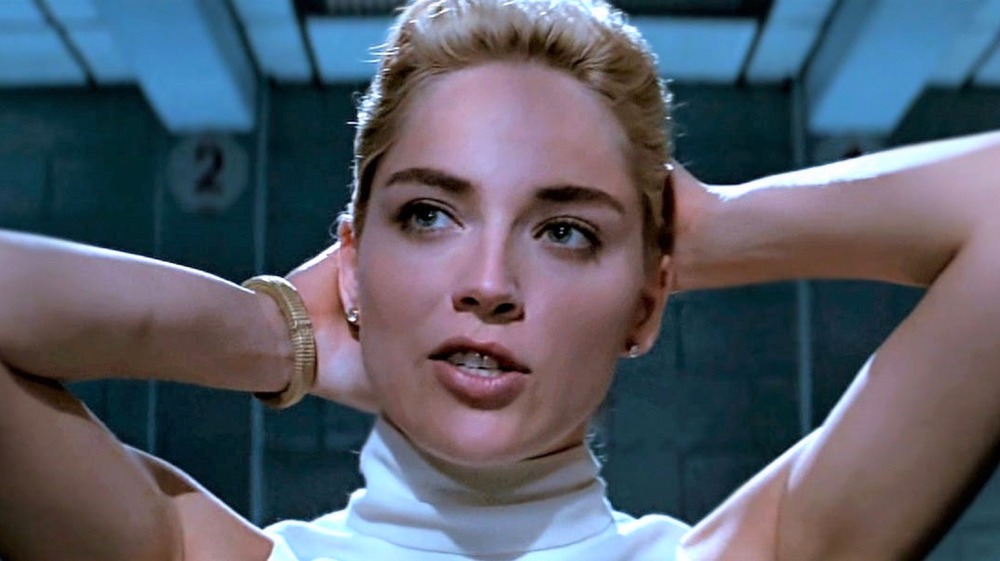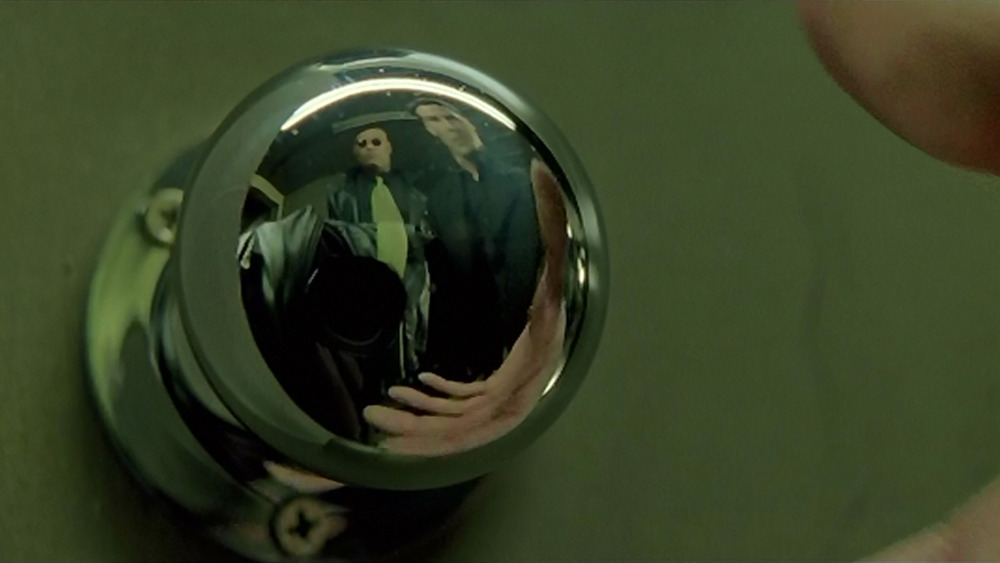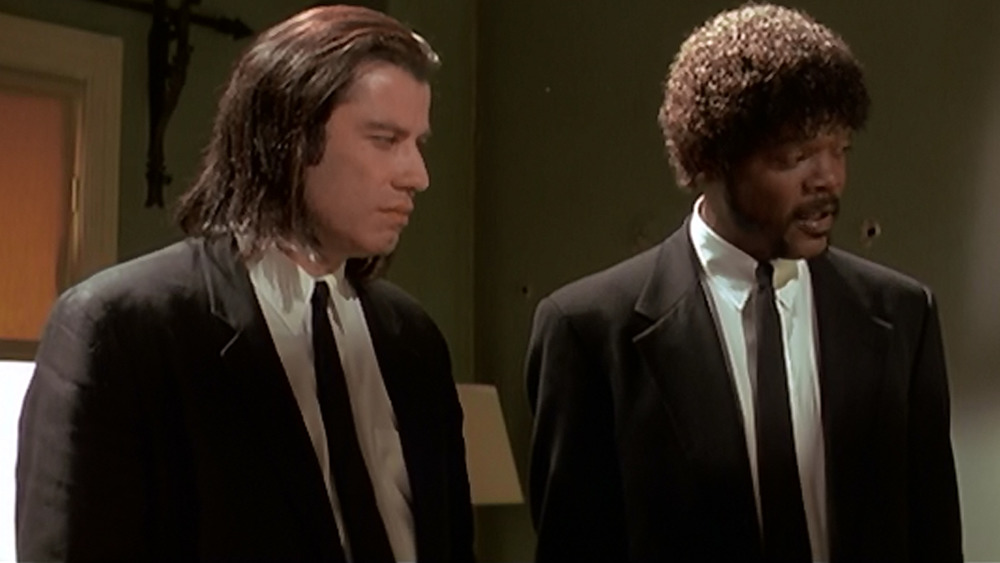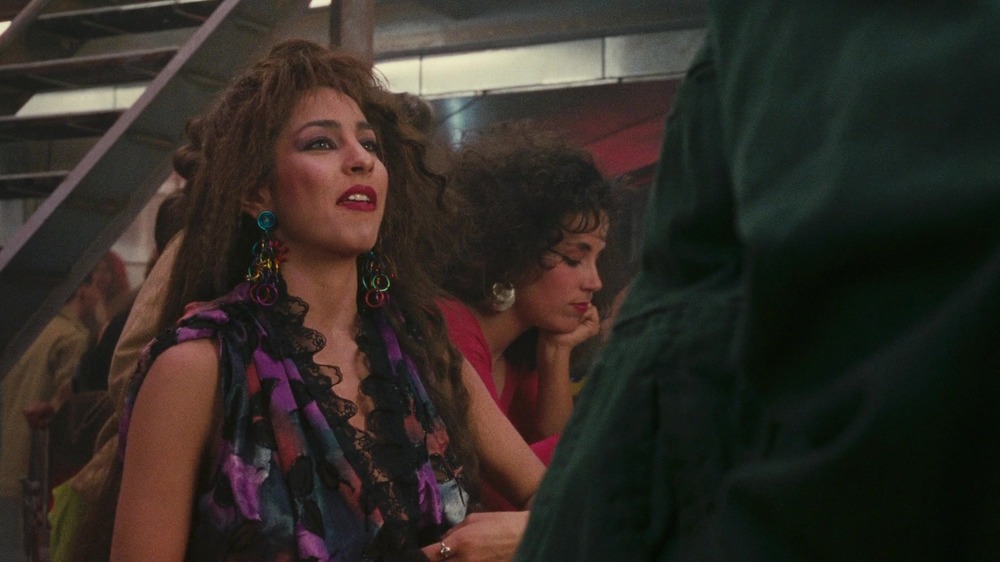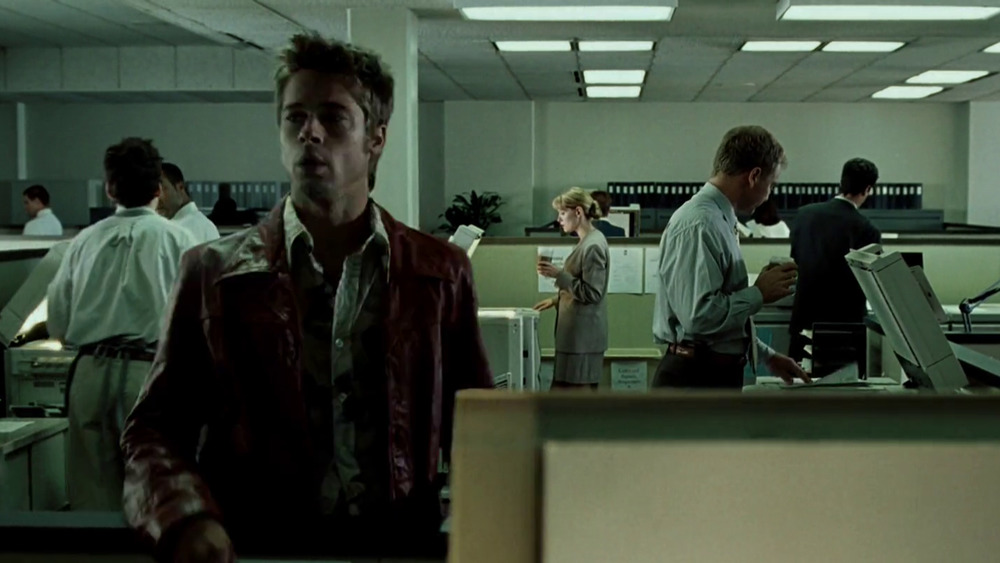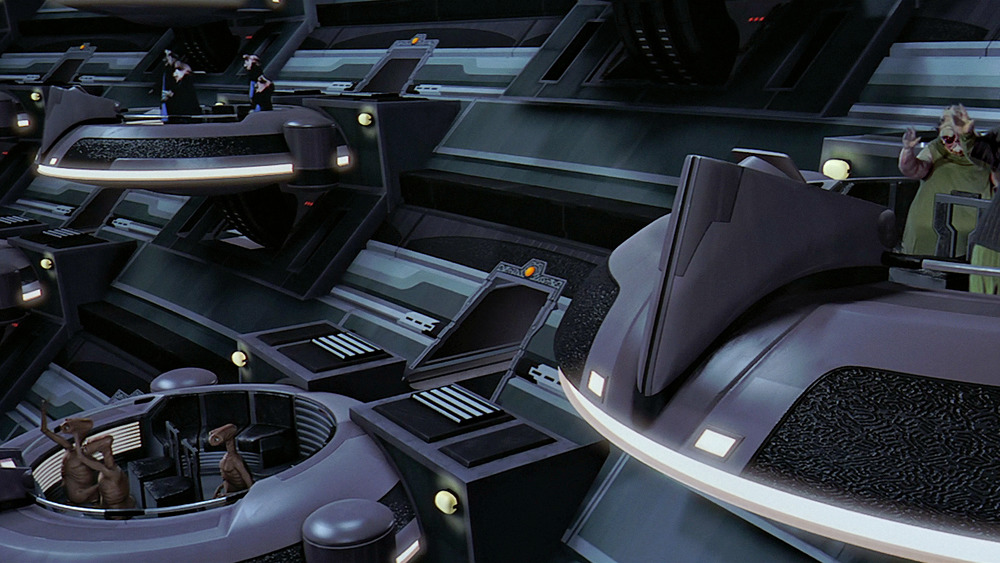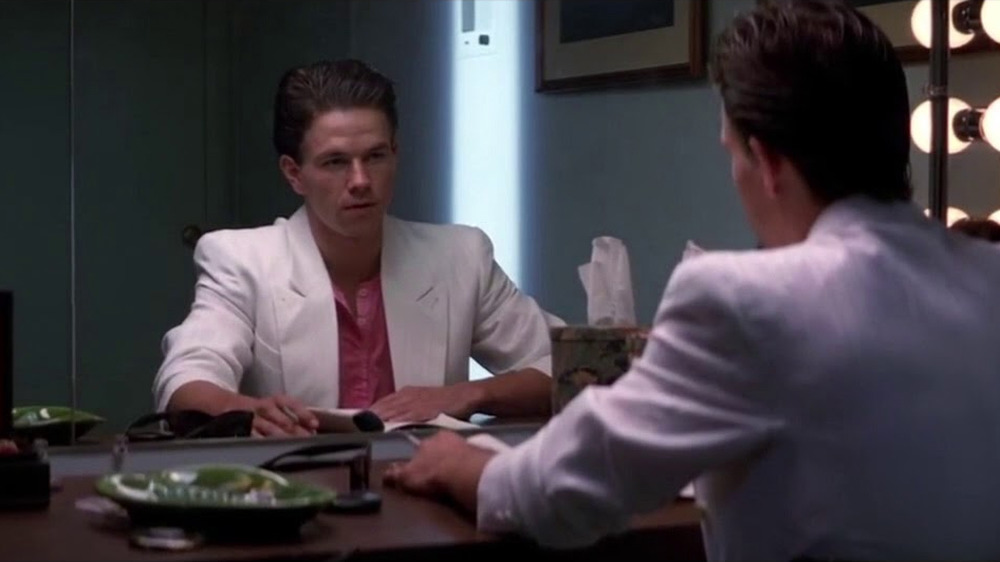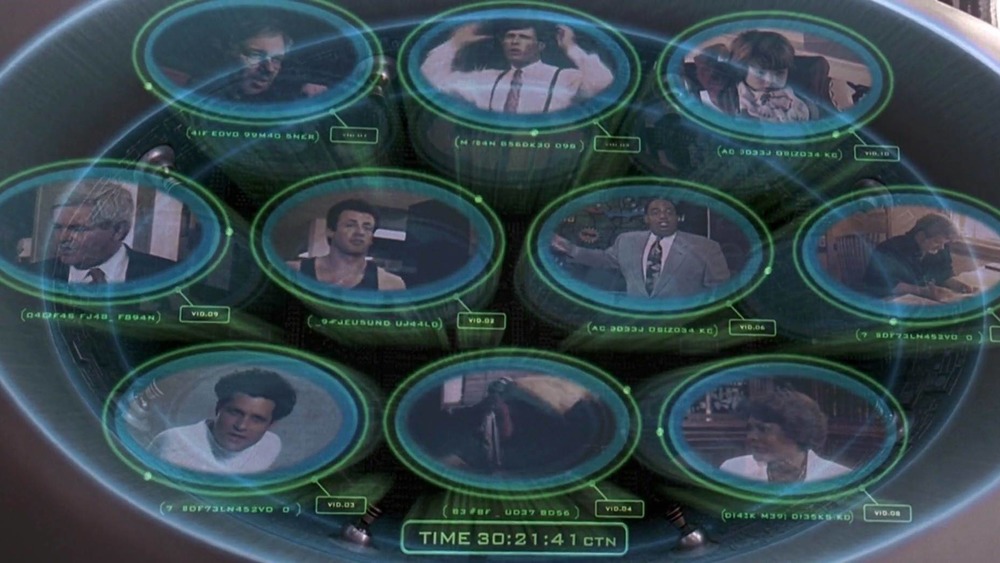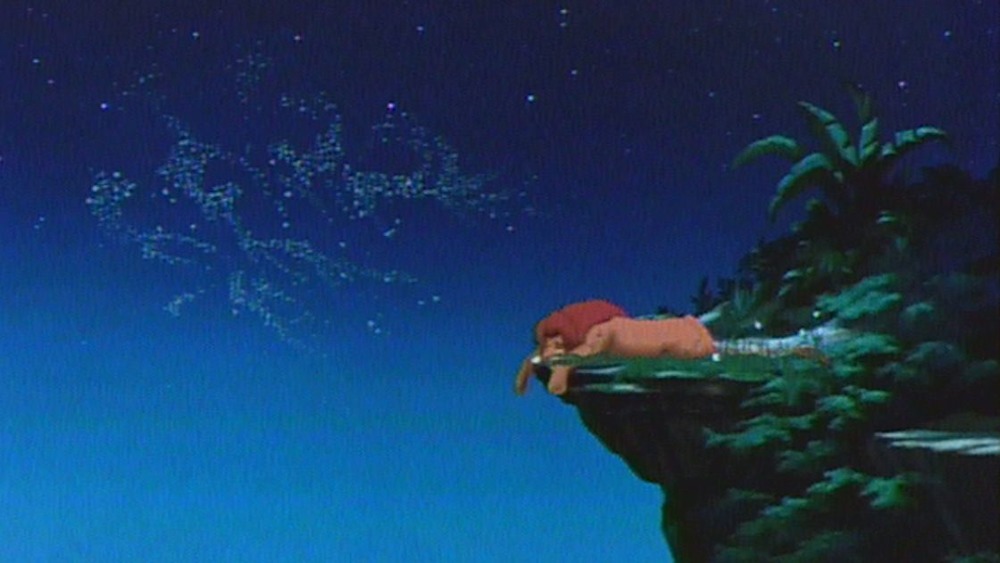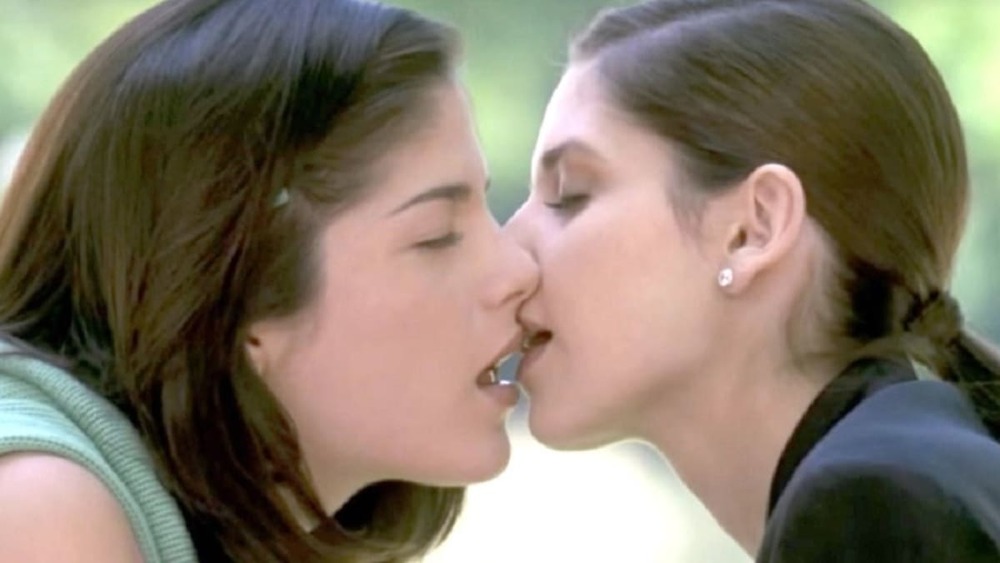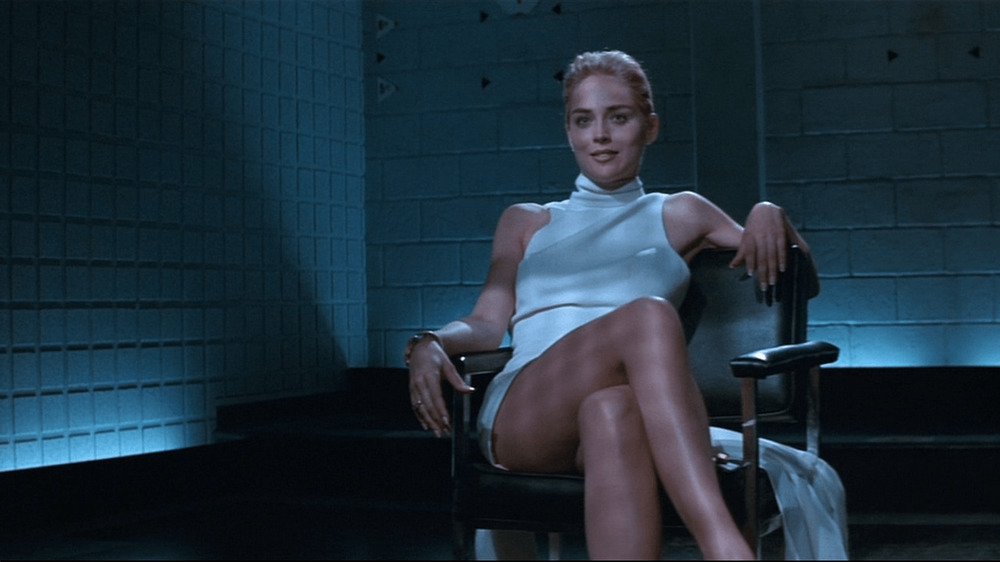The Most Paused '90s Movie Moments
The 1990s was a landmark decade for theatrical films, and the rise of DVDs meant that audiences now had access to higher quality versions of these films than ever before. And with this new power, many film fans decided to pause some of their favorite movies during key moments and take a closer look.
There are a variety of reasons that they did this. Sometimes viewers were hitting pause to get a closer look at hidden Easter eggs and visual gags that were only on-screen for a few brief frames. Other times, it was to discover various production goofs and continuity errors that totally broke the reality of the film. And still other times, they were pausing for far simpler and less intellectual reasons. After all, there were some extremely sexy films that came out of the '90s, full of notoriously spicy scenes. Some audience members maybe just wanted to make those moments last a little bit longer, and you know what, we're not here to judge.
Today, we'll be covering the biggest pause-worthy moments in 1990s filmmaking — the funny, the sexy, and the downright embarrassing.
Hidden in this doorknob is a glitch in The Matrix
The classic 1999 science fiction film The Matrix tells the story of a group of people who one day realize that the world they live in is a simulation, which they then seek to break free from. Funny enough, a similar thing happened to a small percentage of viewers during a certain scene in the film, when a small production error gave them an unexpected reminder that the film they were watching was itself also a simulation.
The moment comes when two of our heroes, Morpheus (Laurence Fishburne) and Neo (Keanu Reeves), are going to visit the sage-like figure known as the Oracle. As they stand in the hallway outside her the door to her apartment, there's a gorgeously composed insert shot of Neo's hand reaching out to grab the reflective metal doorknob. However, in addition to reflecting Neo and Morpheus, the doorknob is also reflecting the camera lens. It's the sort of thing that you probably won't notice the first few times you watch the film, but once you see it, you can't unsee it.
That being said, the production team appears to have come up with a pretty ingenious solution to hide as much of the camera as possible. They've covered it with a replica of Morpheus' outfit, complete with his tie, and they've placed the camera such a way that it somewhat blends into Morpheus' torso just behind it. To be honest, unlike some production "goofs," this one doesn't bother us at all. We're genuinely impressed by the this bit of old-school movie-making ingenuity.
The bullet holes in the wall are the true miracle in Pulp Fiction
When Pulp Fiction introduces us to the two hitmen characters, Jules Winnfield (Samuel L. Jackson) and Vincent Vega (John Travolta), they're arriving at an apartment building to retrieve a briefcase that's been stolen by a small-time criminal named Brett ... and also to execute Brett and his friends. However, before they can finish this job, an unseen attacker emerges from the bathroom, brandishing a pistol. He opens fire on the two hitmen, but once he finishes, we see that somehow, he hit nothing but air. There are bullet holes in the wall behind them, but they themselves are totally unharmed. It's such an unlikely outcome that Jules eventually comes to believe that this event was a miracle. Their lives were spared by God to give them the chance to repent for all the evil they've done.
However, some eagle-eyed audience members noticed a small problem in this scene. If you pause the film during an earlier shot in the apartment, before the hidden gunman appears, you'll see that the bullet holes are already present in the wall behind Jules and Vincent. Now clearly, this is just a production error, but if you want to go really far down the rabbit hole of weird headcanons, there's also an alternate explanation. What if there just happened to be some bullet holes in that wall already? What if there was no miracle at all, and the real reason why Jules and Vincent weren't harmed by the gunman's shots was because he accidentally loaded up his gun with blanks?
Alright, we'll take off the tinfoil hats now. Clearly that isn't what Tarantino intended, but it is fun to think about.
Seeing triple in Total Recall
The 1990 cyberpunk action film Total Recall tells the story of a construction worker named Douglas Quaid (Arnold Schwarzenegger), who one day discovers that all of his memories have been falsely implanted into his brain, and he has no idea who he truly is. After receiving a message from himself in the past, pre-memory wipe, Quaid learns that he has to go to Mars to seek out a woman named Melina who works in a bar/brothel called the "Last Resort."
Once Quaid arrives in the Last Resort, he sees that many of the people here have been mutated from radiation and have some unusual anatomy. He asks about Melina and learns that she's currently busy with another customer, but then, in a now-infamous moment, another friendly sex worker named Mary (Lycia Naff) suggests to Quaid that perhaps she could keep him company instead. As she does so, she proudly opens her shirt, revealing that she has three breasts. Quaid politely declines, saying he'll wait for Melina. Mary calls Quaid "Earth slime" and storms off.
Mary might not have been Quaid's type, but apparently, a decent chunk of film fans disagreed with him, believing that this woman's atypical anatomy was indeed worth a second look. Despite being completely incidental to the larger plot, this silly sexy gag quickly became one of the most memorable images from that film, and as such, it was, bizarrely enough, one of very few elements that carried over to the 2012 remake.
Tyler Durden's first appearance in Fight Club
The 1999 film Fight Club is one of the most meticulously constructed movies of all time. And more so than any other film we're discussing today, you'll definitely need to pause the movie if you want to catch some of this film's hidden Easter eggs because some of them appear in only a single frame each.
We all remember Tyler Durden's first iconic scene in the film, right? While on a plane flight home from a business trip, our unnamed protagonist (Edward Norton) suddenly realizes that there's a strange man in red sunglasses seated next to him, played to perfection by Brad Pitt. The stranger then strikes up a conversation, and the two discuss airplane safety cards, homemade napalm, and soap. Although our narrator doesn't realize it yet, this encounter is about to change the direction of his life forever.
But what if we told you that this fateful meeting isn't actually Durden's first appearance in Fight Club? At several points earlier in the film, Tyler briefly appears spliced into the film for only a single frame in each appearance, as though he's flickering in and out of existence. Those of you who've already seen the movie can probably guess why the filmmakers decided to do this, and for those of you haven't, we wouldn't want to spoil any of this movie's many delightful twists, so you'll have to check it out for yourselves.
The E.T. cameo in Star Wars: Episode I - The Phantom Menace
The Star Wars films have always presented landscapes that are rich with surprising visual details and secret Easter eggs. One of the most famous hidden examples occurs in the 1999 film Star Wars: Episode I – The Phantom Menace, but it comes and goes so quickly that you'll probably have to pause the film to see it for yourself.
The moment occurs midway through the movie, when the Galactic Senate is meeting on Coruscant. Among the many aliens that we see gathered together in this meeting are a trio of creatures that will definitely be familiar to most film fans. They appear to be the same species as the aliens from the 1982 movie E.T. the Extra-Terrestrial.
This inclusion makes sense once you remember that the creator of Star Wars, George Lucas, and the creator of E.T., Steven Spielberg, are longtime friends and collaborators. In fact, this is the second crossover we've seen between these two franchises, since E.T. the Extra-Terrestrial also had a Star Wars reference in it. When the titular alien is wandering around on Halloween, he sees a child in a Yoda costume. E.T. then starts to approach the child, repeating the word "home" over and over again, before his human companions drag him away.
A glimpse of Mark Wahlberg's 'Dirk Diggler' in Boogie Nights
Many infamously paused movie moments revolve around female nudity, but turnabout is fair play, so now let's discuss a rare example of male nudity in a '90s film, the final scene of Paul Thomas Anderson's 1997 movie, Boogie Nights.
The film follows the life of porn actor Dirk Diggler (Mark Wahlberg). Dirk is an overnight success due to his exceptional anatomy, but he later destroys his career and friendships due to drug addiction and pride. At the end of the film, his fate is uncertain. Dirk sits in his dressing room, about to film his first porn film in a long time in an effort to restart his career. He has risen, he has fallen, he just might rise again, but in order to, uh, fully rise, he needs to give himself a bit of a pep talk. Wahlberg looks himself in the mirror, unzips his pants, and pulls out his unbelievably large, shall we say, "Dirk Diggler." He lets it hang for a moment as he says to himself, "I am a star. I'm a star, I'm a star, I'm a star. I am a big, bright, shining star." He then tucks it away again and walks off onto set.
One reason this scene was paused so often is because some viewers were attempting to figure out whether or not this was Mark Wahlberg's actual body we were seeing. (For the record, it wasn't. He was wearing a prosthetic.) But plenty of other film fans weren't interested in solving the mystery, they were just basking in the view. After all, though there are countless iconic images throughout Boogie Nights, for many it was this last scene that ended up being the most memberable, er ... memorable.
Some top-secret Easter eggs in Men in Black
The 1997 film Men in Black tells the story of a secret organization that protects the Earth from extraterrestrial threats and works to keep the existence of aliens a secret. Shortly after our protagonist, Jay (Will Smith), is recruited into this organization, he's given a tour of the Men in Black's extensive underground base. Though there are many unforgettable sights he encounters during this sequence, one shot is so dense with information that audiences had no choice but to pause the scene if they wanted to take it all in.
Jay comes across a computer terminal that sits at the base of a massive array of holographic screens, all displaying real-time footage of various real-world celebrities who are secretly aliens. Among the many celebrities displayed on the screen are Danny DeVito, Al Roker, Sylvester Stallone, Dionne Warwick, Newt Gingrich, George Lucas, and even some of the Men in Black's filmmakers, including director Barry Sonnenfeld and executive producer Steven Spielberg.
The Lion King's 'hidden message' in the sky
Now we've arrived at what's probably the most hotly debated and controversial moment we're covering today, a certain infamous "hidden message" that appears in the sky in The Lion King. The moment comes midway through the film, when Simba stands contemplatively at the edge of a cliff. Overwhelmed by the weight of his past regrets, he collapses into a tired heap. As he does so, his weight sends a cloud of dust and leaves swirling up into the air. For a few frames, the dust appears to arrange itself into three letters, interpreted by some viewers as "S-E-X."
This supposedly lewd message in a children's film was brought to national attention in 1995 by the American Life League (ALL), a Virginia-based Christian anti-abortion group, who called for Disney to apologize. However, Disney spokesperson Rick Rhoades refused on the company's behalf, saying, "They're seeing something there that isn't." In a later interview with The Huffington Post, animator Tom Sito claimed that it's actually supposed to say "SFX," a nod to the film's special effects department. However, for the 2002 IMAX re-release, and in all subsequent editions of the film, Disney decided to save itself any more future headaches by just removing the "letters" entirely, replacing them with abstract swirls.
A kiss we want to last forever in Cruel Intentions
The 1999 film Cruel Intentions contains no shortage of sexy, pause-worthy moments, but there's one scene in particular that's gone down in cinema history as one of the steamiest images ever captured on celluloid.
When the rich and heartless Kathryn Merteuil (Sarah Michelle Gellar) discovers that Court (Charlie O'Connell), her former lover, has left her for a girl named Cecile Caldwell (Selma Blair), she comes up with a plan for revenge. Kathryn befriends Cecile without Court's knowledge and makes it her mission to "corrupt" Cecile in his eyes by making her sleep with as many other people as possible. One day, when the two girls are having a picnic in the park, Cecile expresses some hesitance about her new boyfriend, saying that she's never even kissed a boy before. Kathryn, seeing an opportunity to help push Cecile towards sexuality promiscuity, offers to show her the ropes by "practicing" with her. Cecile follows Kathryn's lead, and after a brief yet passionate make-out, Kathryn pulls away, leaving Cecile clearly wanting more.
It seems as though audiences were also left wanting more, and this iconic kiss became a moment that many were fond of pausing and/or rewatching over and over again. After the scene won the 2000 MTV Movie Award for Best Kiss, it solidified its place in history as one of the most iconic film kisses ever.
The legs uncrossing shot from Basic Instinct
When thinking about famously paused film frames from the '90s, a certain scene from Basic Instinct was definitely the first moment that crossed — and uncrossed — our minds. The film follows detective Nick Curran (Michael Douglas) as he investigates a murder. Curran quickly settles on the victim's girlfriend, novelist Catherine Tramell (Sharon Stone), as the only real suspect. Tramell is beautiful, brilliant, fantastically wealthy, and utterly heartless. Nick knows in his gut that she's the one who did it, but he doesn't have any hard evidence, so he brings her in to the police station for an interrogation.
In a now-famous scene, Tramell, wearing a short white dress, finds herself facing half a dozen men in suits asking her increasingly invasive questions. Despite the men's attempts to wear her down, Catherine remains unphased, casually sitting with her legs crossed, smoking a cigarette, and smiling. Then, as the police grow increasingly frustrated, Catherine uncrosses her legs, then re-crosses them the opposite way. As she does so, it becomes clear to everyone watching — both in the scene and in the audience — that she isn't wearing underwear. And it's clear from the way that Catherine moves that this isn't a slip on her behalf. This is a display of dominance over the incompetent men who've failed to intimidate her to even the slightest degree.
Though pretty much everything else about Basic Instinct has now faded from our collective cultural memory, this one moment has endured, eventually becoming one of the most referenced and parodied moments in film in history.
